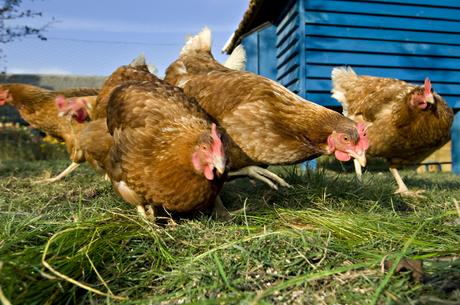Food safety — from farm to fork

A variety of foodstuffs, previously only available when in season, are now commercially available all year round. The demand for frozen products and ready meals is also on the rise. This desire for the rapid and permanent availability of foods has consequences for the structure of the food supply chain because many products and ingredients are now imported and exported.
As a result, the global trade in food entails not just logistical challenges, but also food safety risks. For instance, food fraud by international suppliers — such as the European horsemeat scandal in 2013, or food-related outbreaks of disease — cannot be limited to a single region or country. In a bid to address this, consumers are calling for more transparency with regard to the provenance and authenticity of foodstuffs. They want to know the level of quality in food, what it contains, and under what conditions it was produced, processed, packaged, stored and delivered.
Securing traceability — preventing recalls
Legal requirements also have global ramifications on the efforts of the food industry to guarantee the highest possible standards of food safety. In no other industry do the slightest mistakes at any stage of the food chain have such serious consequences on consumer wellbeing as in the food production and processing industry.
Food scandals such as the Dioxin Affair or the European BSE crisis in the late 1990s prompted both the foundation of the European Food Safety Authority (EFSA) in 2002 and the European Parliament and Council’s adoption of Regulation (EC) No. 178/2002, which laid down the general principles of food law. This regulation requires the food industry to establish systems to enable traceability of foodstuffs across all stages of production, processing and distribution. In addition, food companies became responsible for recalling unsafe goods and products in order to prevent contamination of the food chain.
To allow them to assess the causes of a contamination, companies must be able to trace back the trajectory of their products from the producer, through the processing stages, to retailers. In the worst-case scenario, all affected foods must be withdrawn from circulation as quickly as possible. Recalls not only entail financial damage for companies, but are also damaging to brand reputation. It is therefore essential for them to implement an appropriate traceability system which offers complete documentation on the product’s route through production, thereby allowing companies to minimise the scale of recalls. Identification solutions such as RFID technology, laser-based bar code scanners and image-based code readers collect all the information necessary to reliably trace foodstuffs.
Securing quality — preventing errors in production, processing and packaging
Due to the increasing consumer demand for quality, a key necessity for the food and beverage industry is quality assurance. The high demand for foodstuffs conforming to ever-more specific consumer preferences necessitates a customised approach to production, processing and packaging. To this end, the appropriate production, processing and packaging processes must be designed to be as flexible as possible while also fulfilling the need to use resources efficiently.
With respect to quality assurance, it is therefore worthwhile to monitor a large number of process parameters to discover abnormalities and errors, to reduce the amount of waste and to avoid machine downtime — all at high production speeds. Vision technology is used in the food and beverage industry to detect not only the position of goods and packaging and measure their dimensions, volume and contours, but also to check their level of quality.
This technology generates a great deal of process data, enabling better monitoring and automation of production, processing and packaging processes — whether in the primary, secondary or final packaging stage. For instance, even the most challenging gripping tasks can be executed in a way that prevents damage to the product. Intelligent, flexibly adjustable photoelectric sensors help to significantly enhance the quality and efficiency of packaging machines.
Securing data acquisition — preventing bacterial growth
For safe production, processing or filling of food and beverages, it is essential that strict hygiene standards, such as those specified by the EHEDG (European Hygienic Engineering & Design Group) or American 3-A Sanitary Standards, are observed at all times. To this end, machines and systems in the food and beverage industry are subjected not only to particularly high temperatures, but also to daily high-pressure cleaning (washdown) and aggressive cleaning and disinfection agents.
But even when such extreme conditions are in place, users would be unwise not to use intelligent sensor technology to make their production and processing procedures more efficient. They should source photoelectric sensors, bar code scanners and level, pressure and temperature sensors in rugged stainless steel Inox, or VISTAL housings. Sensors coated with PTFE (Teflon) or safety light curtains with enclosure rating IP69K offer hazardous point protection in wet areas. The sensors feature a high degree of seal tightness while also offering thermal and chemical resistance.
Choosing rugged sensors safeguards the ability to collect process data reliably, thereby guaranteeing the supply of digital information.
Adapting the Australasian cold chain for a sustainable future
With challenges rapidly changing the landscape of cold storage operations, businesses must adapt...
Four trends shaping warehouse automation and intralogistics in 2025
Four key trends expected to shape the warehouse automation and intralogistics industry in...
Unlocking AI: strategic moves to revolutionise the food sector
As the AI transformation gathers pace, we can expect AI tools to become established in the food...











